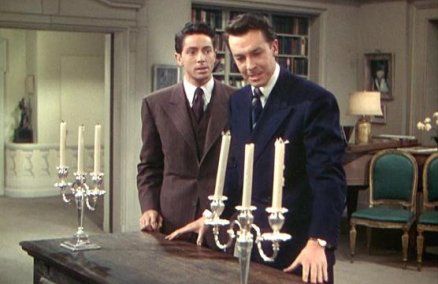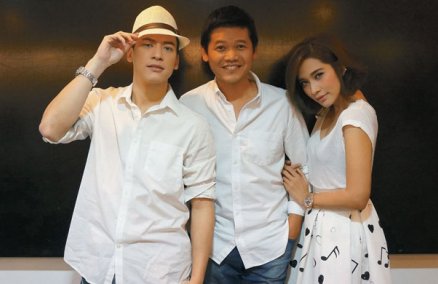Just ask around in your circle of friends and chances are that at least one of them is attending a yoga class, or has attended one before in his or her lifetime.
Numerous yoga studios and fitness centers have sprung up all over the island in the past two years, all eager to rake in what some term as the “yoga dollar”. According to a The Straits Times article in Feb this year, yoga was voted as one of the country’s top ten sports last year—which means Singaporeans are finding it an effective way to tone up and wind down.
So now you know: Yoga is the new way to attaining better health, peace and a erm, rubbier physique (you know what we mean). Not only will you surprise yourself with never-before known feats of dexterity, but you’ll also enjoy a new inner calm. So read on for a guide to this yog-tastic sport.
Yoga Stereotypes
Once you embark on your yoga travels, we’re sure you’ll be rubbing shoulders and yoga mats with a few recurring types that you will no doubt have many encounters with (for better or worse). Here’s our pick of some. Recognize any?
The Yoga Bunny (read: Vainpot)
While the rest of us sweat it out in totally unglam positions matched with angst-ridden expressions, this said species just waltzes in wearing the tiniest (and trendiest) gym outfit with matching yoga bag and mat, plus the latest perfume, accessories and matching colored nails—looking like a Barbie Yoga Doll. It makes you wonder if they’re there for yoga or to be a human exhibit of bimbotic-ness. No wonder you can’t master the moves. You’re puking inside half the time.
How to deal with them: “Accidentally” spill your half-drunk latte in their yoga bag, then casually offer them your most hideous, ah-soh (auntie) T-shirt to wear home. Then, as she puts it on reluctantly, glossed lips trembling, take a picture of her and stick it on her locker. That’s sure to make her famous.
Yoga studio most likely to frequent: COMO Shambhala Urban Escape. It’s run by Club 21. Enough said.
The Royal Whiner
While to complain is to be Singaporean, this species takes the cake. You can hear them before you see them—whining about how hot the room is during a hot yoga session, how difficult it is to touch their small toe, how prickly the bath towels and yoga mats are, how slowww the instructor is, and when he picks up his speed, how they can’t keep up because the instructor is “too fast lah!”. The classes are too big (or too small) depending on their mood, and virtually every type of yoga is too tough for them. In short, nothing is ever good enough for these guys—the Yoga Malcontent.
How to deal with them: Whatever you do, don’t be a fool and complain along with them. That will fuel their dissatisfaction and they’ll follow you to the ends of the earth, still bitching away. Just ignore them. Walk away halfway while they are poised in mid-bitch. Or just hiss savagely “shaaaaad dup lah.”
Yoga studio most likely to frequent: The Yoga Place. Classes are pretty small here, so the Royal Whiner has ample time and space to air their one million and one grievances.
The Showoff
This yoga specimen thinks they’re too good to walk on the same ground as you—the inadequate yoga duckling. Unfortunately good at the yoga game, they make no bones about letting everyone know it. You’ll see them executing the most excruciating pose without the slightest effort, then coolly telling you to try it. They’ll be the smart ass raising their hand and offering information when the instructor asks the class a question. Sometimes, they even teach the instructor a move or two, while casting a pitying glance at the rest of us poor mortals. They reek completely of a barely-disguised air of superiority.
How to deal with them: These types of cretins crave attention, so never gawk at their moves. They’ll lap it all up. Instead, read up on the obscurest yoga info you can find then quiz them. And if they don’t know, screech loudly “You mean YOU DON’T KNOW? HOW CAN?”, making them drop dead with shame. The easy way out is of course to just ignore them. Your choice.
Yoga studio most likely to frequent: Bikram Yoga City Hall. It’s endorsed by the Bikram Yoga College of India, so the Showoff will be able to feel superior once he steps in (not that he needs any help on that).
The Unabashed Nudist
Most of us are shy about how we look and try to hide behind closets to disguise our not-so-glorious bits, but there are a few unwelcome exceptions. You can spot them a mile away—unembarrassed, blatant types shoving their pastily pale, horrendously flabby bits at whoever that’s unfortunate enough to be near. Their one favorite move is bending over—thereby exposing their creased and corpulent parts to all and sundry who are immediately and irrevocably traumatized. If you’re super duper unlucky, they may even release a fart or two while bending over, causing a nuclear holocaust.
How to deal with them: Two words: Wet towel or alternatively—Rubber band
Yoga studio most likely to frequent: Pure Yoga. Classes have more than ten students in them, so they can be the flesh flasher (get it?) to a larger crowd.
The Newbie
You can spot them a mile away—with a lost, vague expression, scratching their neck and haplessly clutching their mat. They flout all the unsaid rules unknowingly—changing in the toilet cubicle, mispronouncing yoga jargon and messing up their locker combination. While you were probably once like that yourself, the savvy yoga expert in you has hardly sympathy (or time) left for the floundering newbie. Tough luck.
How to deal with them: If you’re feeling wicked, sign them up for the “Advanced Über-Yoga” course and giggle to yourself as they cry helplessly, trying desperately to touch their foot to their ear.
Yoga studio most likely to frequent: True Yoga. Knowing how lost these guys always are, they’re likely to enroll in a well-established name like True so as to feel more secure (as if).
Where to get your dosage of yoga
Advertisement

























